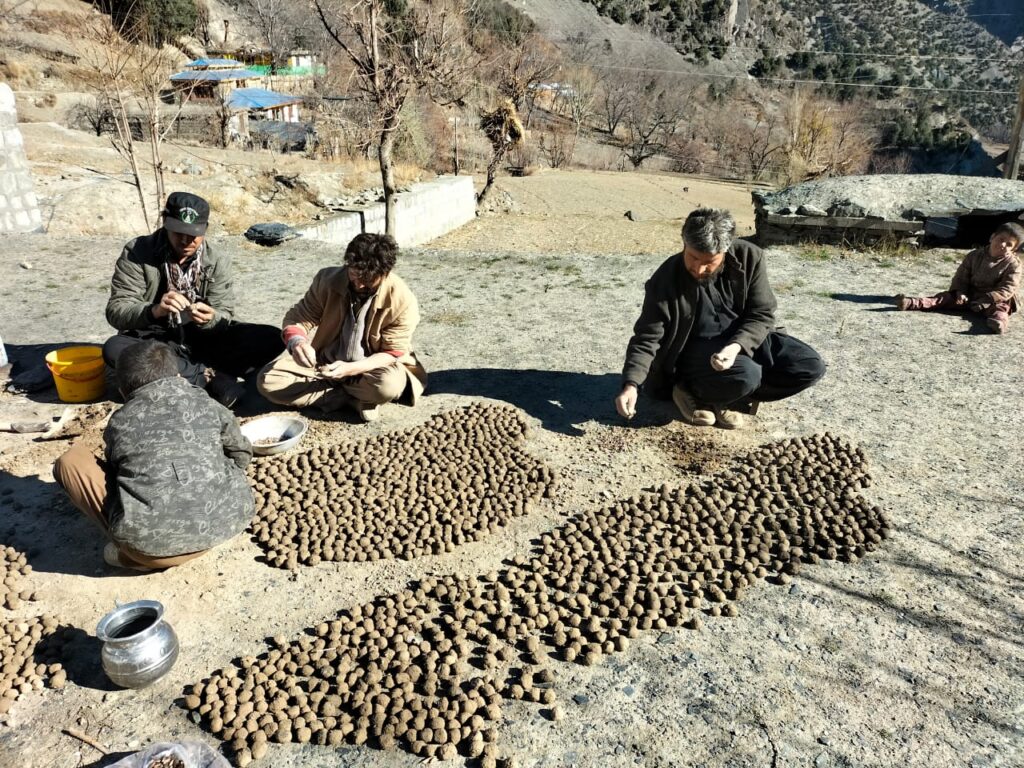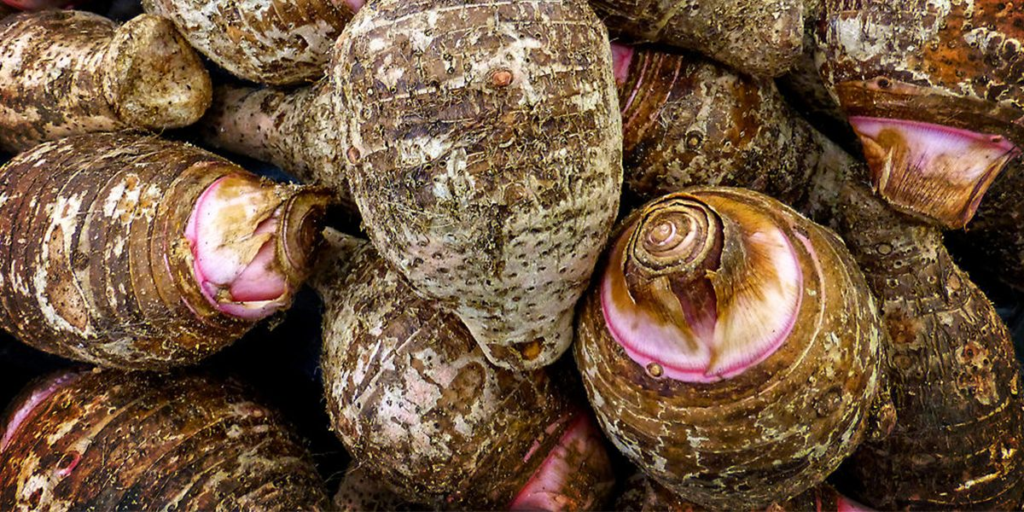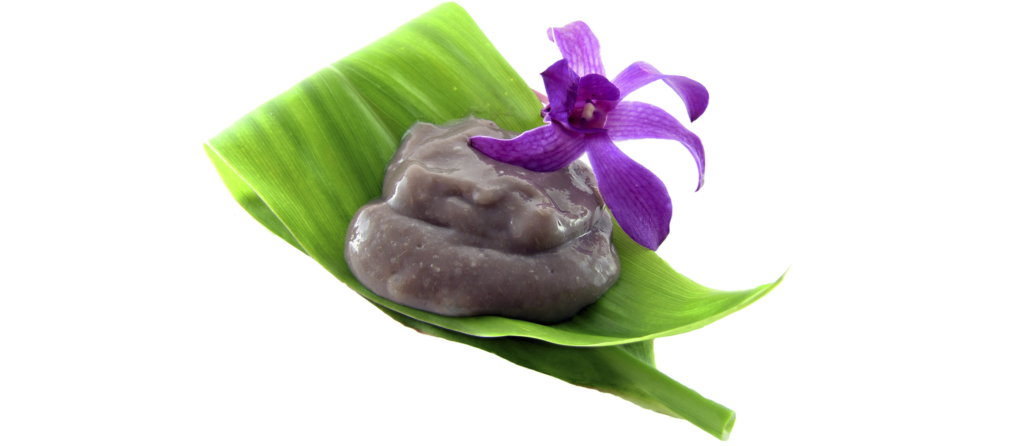DMH-11 கடுகு

நறுமணப் பொருட்களுக்கு பிரபலமான இந்திய உணவுகளில் கடுகு மிக முக்கியமான காரச் சுவையூட்டி. பல வகைப்பட்ட கடுகுகள் இந்தியச் சமையலில் பயன்படுகின்றன. சுவையூட்டியாக மட்டுமல்லாது கடுகு பல சத்துக்கள் அடங்கிய, உடல் ஆரோக்கியத்துக்கும் உதவும் ஒரு பொருள். ஐரோப்பாவை தாயகமாகக் கொண்ட கடுகின் உலகளாவிய பயன்பாடு 5 ஆயிரம் ஆண்டுகளுக்கு முன்பிருந்தே இருந்துள்ளது.
முட்டைக்கோஸ் குடும்பமான பிரேசிகேசியை சேர்ந்த கடுகுச் செடியின் நீளமான பச்சைக்காய்களின் சிறிய உருண்டை விதைகளே கடுகு எனப்படுகின்றது. கடுகுச் செடியின் சத்துக்கள் நிறைந்த இலைகளும் கீரைகளாக உண்ணப்படுகின்றன. இவற்றில் சுமார் 40க்கும் மேற்பட்ட வகைகள் இருந்தாலும் உலகெங்கும் மிக அதிகம் உபயோகத்தில் இருப்பவை வெண்கடுகு, பழுப்பு கடுகு மற்றும் கருங்கடுகு ஆகிய மூன்றும் தான்.
முழுவிதையாக, எண்ணெயாக, பொடியாக, அரைத்த விழுதாக என்று பல விதங்களில் சமையலில் கடுகு உபயோகப்படுத்தப்படுகிறது
பாவையர் கண்ணின் கடைக்கோடியை காட்டிவிட்டால் மண்ணில் குமரர்க்கு மாமலையும் ஓர் கடுகு, கடுகு சிறுத்தாலும் காரம் போகாது போன்ற முதுமொழிகளின் வழியாகவும், கடுகளவும் மலையளவும், கடுகு போலப் பொரிதல் போன்ற ஒப்புமை நோக்கல்கள் மூலமும் நம் கலாச்சாரத்துடன் நெருங்கிய தொடர்பில் இருந்து வரும் கடுகு சமீபத்தில் சர்ச்சைக்குரிய பேசு பொருளாகி இருக்கிறது.
இந்தியாவின் இரண்டாவது முக்கிய எண்ணெய் பயிர் கடுகுதான் (நிலக்கடலைக்கு அடுத்ததாக). பெரும்பாலான இந்திய கடுகுப் பயிர்கள் வடஇந்தியாவில் பயிராகின்றன. கடுகின் நுண் விதைகளில் 45 சதவீதம் கடுகு எண்ணெய் அடங்கியிருக்கிறது. இந்தியாவின் மொத்த கடுகு உற்பத்தியில் 60 சதவீதம் உத்தரபிரதேசத்தில் பயிராகின்றது. இந்தியாவில் மிக அதிகமாக பயிராகும் கடுகு வகைகள்:
1. பழுப்பு கடுகு-Brassica juncea
2. மஞ்சள்/வெண் கடுகு-Brassica alba
3. கருங்கடுகு-Brassica nigra
இந்தியாவில் கடுகுப் பயிர் 87.44 லட்சம் ஹெக்டேர் நிலப்பரப்பில் சாகுபடியாகிறது.எனினும் இந்திய கடுகு உற்பத்தி 7 மில்லியன் டன்களாகத்தான் இருக்கிறது. இந்தியாவிற்கான உணவு எண்ணெய் தொடர்ந்து வெளிநாடுகளில் இருந்துதான் இறக்குமதி செய்யப்படுகிறது வருடா வருடம் இந்தியா 14.5 மில்லியன் டன் உணவு எண்ணெய் இறக்குமதி செய்வதற்காக மட்டும் சுமார் 60 ஆயிரம் கோடிகளை செலவு செய்கிறது.
இந்தியக் கடுகு விவசாயிகளின் சவால்களாக தரமான கடுகு விதைகள் கிடைக்காதது, கடுகுப் பயிர்களின் பூச்சி, பூஞ்சை தாக்குதல்கள் மற்றும் களை ஆகியவை இருக்கின்றன.
எனினும் கடந்த ஐந்து வருடங்களில் கடுகு விவசாயிகள் புதிய விவசாய தொழில் நுட்பங்களை மேற்கொண்டதால் இந்தியக் கடுகு விளைச்சல் வெகுவாக அதிகரித்திருக்கிறது. புதிய விவசாயத் தொழில்நுட்பங்கள் உணவுப்பயிர்களில் இது போன்ற சவால்ளைத் தீர்க்கப் பெரிதும் உதவுகின்றன.
1996 ல், Genetically Modified (GM) Crops என்னும் மரபணு மாற்றப்பட்ட பயிர்கள் 6 நாடுகளில் முதன்முதலாக வளர்க்கப்பட்டன. 2009ல் இப்பயிர்கள் 25 நாடுகளிலும் 2019 ல் 29 நாடுகளிலும் பயிராகின
மரபணு மாற்றப்பட்ட மக்காச்சோளம், சோயாபீன், சோளம், உருளைக்கிழங்கு ஆப்பிள்,பப்பாளி, இளஞ்சிவப்பு அன்னாசி,பருத்தி ஆகியவை இந்நாடுகளில் பயிராகும் மரபணு மாற்றப் பயிர்கள்
மரபணு மாற்றுப் பயிர்கள் என்பவை டி.என்.ஏ வில் மரபணு பொறியியல் தொழில்நுட்பத்தின் மூலம் குறிப்பிட்ட,தேவையான மாற்றங்கள் உருவாக்கப்பட்ட பயிர்கள். அதாவது ஒரு தாவரத்தில் இயற்கையாக இல்லாத ஒரு புதிய இயல்பை தொழில்நுட்பத்தின் உதவியுடன் புகுத்துதல்தான் மரபணு மாற்றம்.உதாரணமாக தடித்த தோல் கொண்ட சதைப்பற்றான தக்காளியை பெற அதில் உருளைக்கிழங்கின் மரபணுக்கள் கலக்கப்பட்டதை சொல்லலாம்.
இவ்வாறு உணவுப் பயிர்களும், உணவல்லாத பிற மருந்துப் பயிர்கள், உயிரி எரிபொருள் பயிர்கள் ஆகியவற்றில் மரபணு மாற்றங்கள் செய்யப்பட்டிருக்கின்றன.
சோயா, தக்காளி, பருத்தி விதை போன்ற மரபணு மாற்றப்பட்ட பயிர்கள் 1990ல் சந்தைக்கு வர ஆரம்பித்தன. இவற்றின் மரபணு மாற்றப்பட்ட இயல்புகளாக பூச்சி மற்றும் நோய் எதிர்ப்பு, ஊட்டச்சத்து மற்றும் விளைச்சல் அதிகரிப்பு, வறட்சி மற்றும் உப்புத் தன்மையை தாங்கி பயிர் வளர்தல் போன்றவை கூறப்படுகின்றன.
இவற்றில்:
Transgenic பயிர்கள் என்பவை பிற இனங்களின் மரபணு புகுத்தப்பட்டவை.
Cisgenic பயிர்கள் அவற்றுடன் தொடர்புடைய அல்லது அதே இனத்தை சேர்ந்த பயிர்களின் மரபணுக்களை பெற்றவை.
Sub Genic பயிர்கள் புதிய மரபணுக்கள் புகுத்தப்படாமல் அவற்றின் மரபுக்கட்டமைப்பில் குறிப்பிடத்தக்க மாற்றங்கள் மட்டும் செய்யப்பட்டவை
அமெரிக்கா பிரேசில் கனடா ஆகியவற்றுடன் இந்தியாவும் மரபணு மாற்ற பயிராய்வில் ஈடுபட்டிருக்கிறது.கடந்த 23 வருடங்களில் சுமர் 17 மில்லியன் விவசாயிகள் வளர்ந்த நாடுகளின் மரபணு மாற்றம் உள்ளிட்ட பல உயிரி தொழில் நுட்பங்களை பயன்படுத்தி பயிர் விளைச்சலை மேற்கொண்டு வருகின்றனர்.
இந்தியாவின் முதல் மரபணு மாற்றப்பட்ட, 2002ல் வணிகரீதியாக சாகுபடியும் செய்யப்பட்ட பயிர் Bt பருத்தி. இது அமெரிக்க நிறுவனமான Monsanto வுடன் இணைந்து மகாராஷ்டிரா கலப்புயிர் விதை நிறுவனத்தினால் ( MAHYCO) உருவாக்கப்பட்ட்து.
இந்தியாவில் மரபணு மாற்று சோதனைகள் முடிந்து, இந்திய சுற்றுச்சூழல் அமைச்சகத்தின் ஒரு பிரிவான மரபணு பொறியியல் மதிப்பீட்டுக் குழு (Genetic Engineering Appraisal Committee -GEAC) வின் அனுமதி பெற்று வணிக ரீதியான பயன்பாட்டிற்கான அரசின் அனுமதியை எதிர்பார்த்து காத்திருந்த மூன்று பயிர்கள் கத்தரிக்காய், கடுகு மற்றும் உருளைக்கிழங்கு ஆகியவை.
கத்தரிக்காயின் சோதனை சாகுபடிக்கு மேலதிகச் சோதனைகள் தேவைப்படுவதாக பரிந்துரைகளும் செய்யப்பட்டு அப்போதைய வேளாண் அமைச்சகம் மறுப்பு தெரிவித்தது. GEAC 2009ல் கத்தரிக்காயின் சோதனைகள் முடிவடைந்துவிட்டதாக தெரிவித்தன எனினும் மரபணு மாற்றப் பயிர்களை சாகுபடி செய்வதை எதிர்க்கும் அமைப்புகளின் போராட்டத்தினால், கத்தரிக்காய் சோதனைச் சாகுபடி நிறுத்தி வைக்கப்பட்டுள்ளது.
இவ்வமைப்புகள் உணவுப்பயிர்களில் உருவாக்கப்படும் மரபணு மாற்றங்கள் மனித உடலிலும் ஆதிக்கம் செலுத்துமென்பதால் தொடர்ந்து அத்தகைய சோதனைகளை ஆட்சேபித்து வருகின்றன. கடுகுப் பயிரின் மரபணு மாற்றத்துக்கான கலப்புயிரி உருவாக்க சோதனைகளும் ஆராய்சிகளும் பல ஆண்டுகளாக இந்தியாவில் நடந்து வருகின்றன.
DMH-11கடுகு

இந்நிலையில் கடந்த அக்டோபர் 18, 2022ல் மரபணு மாற்றபட்ட கடுகு வகையான் DMH-11 என்பதை வணிக ரீதியாக சாகுபடி செய்வதற்கான சோதனைகளை செய்யலாம் என்று GEAC அனுமதி அளித்திருப்பதுதான் சர்ச்சைகளை உருவாக்கி இருக்கிறது. சாகுபடி செய்யப்படும் நிலப்பரப்புக்களில் இந்த கடுகினால் உண்டாகும் விளைவுகள், தேனீ உள்ளிட்ட பிற மகரந்த சேர்க்கை நடத்தும் பூச்சி இனங்களுக்கு மரபணு மாற்றப்பட்ட கடுகுப்பயிரினால் உண்டாகும் மாற்றங்களை சோதனை சாகுபடி செய்து அறிந்துகொள்ளலாம் என்றும் GEAC பரிந்துரைத்திருந்தது. .இதற்கு அனுமதி அளிக்கப்பட்டு இக்கடுகு சந்தைப்படுத்தப்பட்டால், இதுவே இந்தியாவின் முதல் மரபணு மாற்றப்பட்ட உணவுப் பயிராக இருக்கும்.
Dhara Mustard Hybrid-11, எனப்படும் DMH – 11 கடுகு டெல்லி பல்கலைக்கழகத்தின் பயிர்த்தாவரங்களின் மரபணு கையாளுதல் மையத்தில் (CGMCP) உருவாக்கப்பட்டது. டெல்லி பல்கலைக்கழக மரபியல் பேராசிரியரும் துணைவேந்தருமான தீபக் பெண்டால் ( Deepak Pental) தலைமையேற்று வழிநடத்திய குழுவினர் இந்த ஆய்வில் ஈடுபட்டிருந்தனர். இந்த மரபணு மாற்றப்பட்ட கடுகின் வெற்றிகரமான உருவாக்கத்துக்கு 14 நீண்ட வருடங்களும் 700 மில்லியனும் செலவாகி இருக்கிறது.
2002ல் நிலத்தில் வாழும், நோயுருவாக்காத பாக்டீரியாவிலிருந்து மரபணுவை பிரித்து இந்த கடுகில் புகுத்தி புதிய வகை கடுகு உருவாக்கப்படும் ஆய்வுகள் துவங்கின.
ஒரு புதிய கலப்பின கடுகு வகை, வருணா மற்றும் Early Heera-2 ஆகிய இருவகை கடுகுகளை கலப்பினம் செய்து உண்டாக்கப்பட்டது.Bacillus amyloliquefaciens என்னும் பாக்டீரியாவிலிருந்து Bar, Barnase , Barstar ஆகிய மரபணுக்கள் பிரித்தெடுக்கப்பட்டு இந்தக் கடுகில் புகுத்தப்பட்டு மரபணு மாற்றப்பட்ட DMH – 11 கடுகு உருவாக்கபட்டிருக்கிறது.
Barnase மரபணு ஆண் மலட்டுத்தன்மையை கடுகில் உருவாக்குகிறது ஆனல் Barstar மரபணு கடுகின் வளமிக்க விதைகளை உருவாக்கும் திறனை தக்கவைக்கிறது, Bar மரபணு கடுகுப்பயிருக்கு களைக்கொல்லி (glufosinate-ammonium tolerance) சகிப்புத் தன்மையை அளிக்கிறது.
புதிய மரபணுக்கள் கடுகுப்பயிரில் மகரந்த சேர்க்கை மற்றும் கருவுருதலில் ஆதிக்கம் செலுத்தி மகசூலை அதிகப்படுத்தும் திறன் கொண்டவை என சொல்லப்படுகின்றது. ஆய்வகச் சோதனைகள் இந்த புதிய வகை கடுகு 19 லிருந்து 30 சதவீதம் அதிக மகசூல் அளிப்பதாக தெரிவிக்கின்றன.
இதனால் உண்டாகும் சூழல் சீர்கேடு மற்றும் மனிதர்களுக்கான ஆரோக்கிய கேடுகள் குறித்து இப்போது கேள்விகள் எழுப்பப்பட்டு வருகின்றன

இந்தியாவின் முக்கிய உயிரி தொழில்நுட்ப வல்லுநர்கள் இந்த புதிய கடுகு வகை மிகத்தேவயான ஒன்று, பருவநிலை மாற்றங்களினால் உணவுப் பற்றாக்குறை உண்டாகி இருக்கும் இச்சமயத்தில் இதுபோன்ற வரவுகள் உண்மையில் அத்தியாவசியமானவை என்கிறார்கள்.
இது வெற்றிகரமாக நடந்தால் பல புதிய மரபணு மாற்ற பயிர்கள் உருவாக இது வழிவகுக்கும் என்பதால் பல ஆய்வாளர்கள் இதை வரவேற்கிறார்கள்.
’’மரபணு மாற்றுப் பயிர்கள் இல்லா இந்தியா’’ போன்ற எதிர்ப்பமைப்புக்களோ இக்கடுகு இன்னும் பலகட்டச் சோதனைகளை கடந்த பின்னரே சூழலுக்கு அறிமுகமாக வேண்டும் என எச்சரிக்கிறார்கள். இப்போது நடத்தப்பட்ட சோதனைகளின் போதாமையை சுட்டிகாட்டும் இவர்கள் இக்கடுகு இப்போது சூழலில் அறிமுகமானால் பெரும் சூழல் சீர்கேடு உண்டாகும் என தெரிவிக்கிறார்கள்.
மரபணு மாற்றப் பயிர்களை எதிர்க்கும் அமைப்புக்களினால் உச்ச நீதிமன்ற அனுமதியை காத்திருக்கும் இந்த கடுகுச் சோதனைச் சாகுபடி பெரும் சர்ச்சைக்குரியதாயிருக்கிறது நவம்பர் மாதத்திலிருந்து இது தொடர்பான விசாரணைகளும் போராட்டங்களும் நடைபெற்று வருகின்றன.
உச்ச நீதிமன்றம் அனுமதித்தாலும் பலகட்ட சோதனைகளை இன்னும் கடந்த பின்னரே விவசாயிகளுக்கு DMH – 11 கடுகுப்பயிர் விதைகள் அளிக்கப்படும் என்றாலும், இயற்கையான சூழலில் நடைபெறவிருக்கும் இந்த சோதனைகளுக்கு இப்போது கடும் எதிர்ப்பு உருவாகி இருக்கிறது. GEAC தனது அக்டோபர் அறிக்கையிலேயே இந்த மரபணு மாற்றப்பட்ட கடுகில் தீங்கு விளைவிக்கும் தன்மைகள் உள்ளதாக ஆதாரங்கள் இருப்பின் இந்த ஒப்புதல் ரத்து செய்யப்படும் என்று தெளிவாகக் குறிப்பிட்டிருக்கிறது
நீதிமன்றம் இன்னும் சிலமாதங்கள் தொடரும் விசாரணைக்கு பின்னர் தான் தீர்ப்பை அறிவிக்கும் என்று விஞ்ஞானிகள் கணிக்கிறார்கள். ஆனால் எதிர்ப்பமைப்புக்கள் முன்னரே கையிலிருக்கும் ஆய்வு முடிவுகளின் அடிப்படையில் தீர்ப்பளிக்காமல் குரங்குகள் உள்ளிட்ட சில விலங்குகளில் DMH – 11 கடுகு எண்ணெயை கொண்டு சோதனை நடத்தி அந்த ஆய்வு முடிவுகளின் பேரில்தான் தீர்ப்பளிக்கப்பட வேண்டும் அதற்கு மேலும் ஐந்தாண்டுகளாவது அவகாசம் தேவைப்படும் என்கின்றன.
ஏற்கனவே GEAC யிடம் 2017ல் இதே கடுகை வெளியிட அனுமதி கோரிய பயிர்த்தாவரங்களின் மரபணு கையாளுதல் மையத்தினர், பின்னர் எதிர்ப்பாளர்களின் குரலுக்கு செவி மடுத்து தேனீக்களிலும் மகரந்த சேர்க்கை நடத்தும் மற்ற பூச்சி இனங்கள் மற்றும் மண்ணில் இருக்கும் நுண்ணுயிரிகளில் நடத்தவேண்டிய சோதனைகளுக்கு அவகாசம் கேட்டு அவர்களே அதை நிறுத்தினார்கள்.
2015லிருந்து DMH – 11 கடுகில் நடத்தப்பட்ட சூழல் பாதுகாப்பு, உணவு பாதுகாப்பு ஆகிவற்றிற்கான பலகட்ட சோதனைகளின் முடிவுகள் திருப்திகரமாக இருந்தன என்று சொல்லப்பட்டாலும், களைக்கொல்லி மரபணு மாற்றத்துக்கான சோதனைகளின் முடிவுகள் இன்னும் வெளிப்படுத்தப்படவில்லை
இந்த சோதனைகளின் அனைத்து முடிவுகளையும் விண்ணப்பத்தின் பேரில் சுற்றுச்சூழல் அமைச்சகத்தின் இணையதளத்தில் யாரும் காணமுடியும் என்னும் வசதியும் உள்ளது
இந்த DMH – 11 கடுகு பயிருக்கு குறைந்த அளவே தண்ணீரும், உரமும் களைக்கொல்லிகளும் தேவைப்படும் என்பதால் குறைந்த முதலீட்டில் அதிக லாபம் பெறலாம் என்றும் உருவாக்கியவர்களின் தரப்பில் கூறப்படுகிறது
எதிர்ப்பு தெரிவித்து தொடர்ந்து போராடி வரும் Alliance for Sustainable and Holistic Agriculture அமைப்பு இந்த ஒப்புதலில் பல முறைகேடுகள் நடந்துள்ளதாகவும் பல சோதனைகள் முழுமையடையவில்லை என்றும் குற்றம் சாட்டுகிறது
ஏற்கனவே பல எதிர்ப்புக்களிடையேயும் அறிமுகமாகி தோல்வியடைந்த மரபணு மாற்றப்பட்ட பருத்தியையும், அதன் நஷ்டங்களால் நடைபெற்ற கணக்கற்ற விவசாயிகளின் தற்கொலைகளும் இந்த எதிர்ப்பாளர்களால் சுட்டிகாட்டப்படுகிறது. மேலும் இது சாகுபடி செய்யப்படுகையில் இந்தியக்கடுகின் தூய மரபணுக்கள் கலப்படமாகிவிடும் அபாயமும் உள்ளது என்கிறார்கள்.
இக்கடுகின் மற்றொரு அபாயமாக சொல்லப்படுவது இதன் களைக்கொல்லி (glufosinate-ammonium tolerance ) சகிப்புத்தன்மை. இதனால் விவசாயிகள் பல மடங்கு அதிகம் களைக்கொல்லி ரசாயனங்களை பயன்படுத்த வேண்டிய கட்டாயம் உருவாகும் என எச்சரிக்கப்படுகிறது.
இதன் பல பரிசோதனைகளில் மகசூல் அதிகரிப்பு இருப்பதாக முடிவுகள் காட்டினாலும் சில பரிசோதனைகளில் கடுகின் அளவும் காய்களின் நீளமும் கணிசமாக குறைந்திருந்தன. மகசூலுக்கு இவ்விரண்டும் மிக முக்கியமான காரணிகள்.
மிக அதிக விதை விலையும் குறைந்த மகசூலும் மீண்டும் ஏற்படுமானால் மீண்டும் பருத்தி தற்கொலைகளைப் போல கடுகு தற்கொலைகளும் நிகழலாம் என்னும் அபாயம் போராடும் அமைப்பினரால் சுட்டிக்காட்டப்படுகின்றது.
உணவு ஒவ்வாமைக்கான சோதனைகளில் இந்த கடுகில் இருக்கும் Bar, Barnase மற்றும் Bastar proteins புரதங்களின் ஒவ்வாமை குறித்த ஒப்புமை ஆய்வு நடத்தப்பட்டதில் இவற்றால் எந்த ஒவ்வாமையும் உண்டாவதில்லை என்று ஆய்வு முடிவுகள் தெரிவிக்கின்றன. எனினும் மனிதர்களின் நோய் எதிர்ப்பு திறன் தொடர்பான மேலதிக ஆய்வுகள் இதில் நடத்தப்படவேண்டி இருக்கிறது.
இந்த கடுகை எதிர்ப்பவர்கள் முக்கியமாக சுட்டிக்காட்டுவது மரபணு மாற்றப்பட்ட கடுகு மண்ணிலும் சூழலிலும் மகரந்த சேர்க்கையிலும் உண்டாக்கவிருக்கும் மிக ஆபத்தான விளைவுகளைத்தான்,
இது நடைமுறைப்படுத்தப்பட்டால் மீட்டெடுக்கவெ முடியாத சூழல் சீர்கேடுகள் உருவகும் என்பதே மரபணுப்பயிர்களை எதிர்க்கும் அமைப்பினரின் ஆணித்தரமான வாதம்.
மரபணு பொறியியல் மதிப்பீட்டுக் குழு இந்த கடுகை வணிக ரீதியாக சாகுபடி செய்வதற்கு முன்னரான சோதனைகளுக்கு மட்டுமே அனுமதி கொடுத்திருக்கிறது. ஆனால் இந்த கடுகை உருவாக்கியவர்களே அனுமதியளிக்கும் குழுவில் உறுப்பினர்களாக இருப்பது தான் சர்ச்சைகளின் அடிப்படையாக இருக்கிறது.
இப்போது இந்த சோதனை முயற்சியை உச்சநீதிமன்ற தீர்ப்பு வரும் வரை நிறுத்தி வைத்துள்ளது. மேலும் இந்த மரபணு மாற்றப்பட்ட கடுகின் சாகுபடியினால் தேனீக்களுக்கும் மற்ற பூச்சி இனங்களுக்கும் உண்டாகும் தாக்கம் குறித்தும் அறிக்கை தாக்கல் செய்யவும் உத்தரவிடப்பட் டுள்ளது.
இதன் ஆதரவாளர்களும் இதை உருவாக்கிய குழுவினரும் இந்த கடுகினால் அதிக கடுகு விளைச்சல், குறைந்த உணவு உற்பத்திக்கான முதலீடு, பூச்சிக்கொல்லிகளின் பயன்பாடு குறைதல் அகியவற்றை தெரிவிக்கின்றனர்
இக்கடுகை எதிர்ப்பவர்கள் இதன் களைக்கொல்லி சகிக்கும் இயல்பினால் உண்டாககூடிய உயிரியல் மற்றும் சூழலியல் அபாயங்களையும் இப்பயிர் மண்னிற்கு உண்டாக்கும் தீங்குகளையும் நடத்தபட்ட ஆய்வுகளில் இருக்கும் நிரப்பப்படாத இடைவெளிகளையும் முன்வைக்கின்றனர்.
மரபணு மாற்றப்பட்ட பயிர்களுக்கான புதிய சந்தையையும்,அதன் காப்புரிமையை குறிவைக்கும் அமைப்புக்களும் மேலும் ஆபத்தை விளைவிப்பார்கள் எனவும் இத்தரப்பு கூறுகிறது இந்த கடுகு சாகுபடி சோதனைகளுக்கு உச்சநீதிமன்றம் தடை விதிக்கும் வரை போராட்டம் தொடரும் எனவும் எதிர்ப்பமைப்புக்கள் தெரிவித்திருக்கின்றன.’
2011ல் வெளியான உயிரி தொழில் நுட்ப விதைகளால் நிகழ்ந்த இந்திய விவசாயிகளின் தற்கொலையை பேசும் Bitter Seeds எனும் பிரபல ஆவணப்படம் இந்தியாவில் மரபணு பயிர்களின் விளைவுகளை விளக்குகிறது. பல சூழலியலாளர்கள் இந்த ஆவணப்படம் அவசியம் பார்க்கப்பட வேண்டிய ஒன்று என்று பரிந்துரைக்கிறார்கள்.
விரைவில் இதற்கான தீர்ப்பை அளிக்கவிருக்கும் உச்சநீதிமன்றத்துக்கு இந்திய தேசியக் குற்ற ஆவணக் காப்பகம் (National Crime Records Bureau of India) 1995 லிருந்து 2006 வரையிலான 12 வருடங்களில் மட்டும் சுமார் 200,000 இந்திய விவசாயிகள் தற்கொலை செய்து கொண்டிருக்கிறார்கள் என்னும் ஆதாரத்தைக் காட்டியதும் நிச்சயம் தெரிந்திருக்கும்.
மாற்றங்கள் தேவைதான் என்றாலும், தங்க ஊசியென்பதால் கண்ணைக் குத்திக்கொள்ள முடியாது. வேலியே கடுகுப்பயிர்களை மேயுமா அல்லது உணவுப்பயிர்களின் விளைச்சலை மரபணு மாற்றப்பட்ட பயிர்கள் அதிகரித்து உணவுப்பாதுகாப்புக்கு வழிவகுக்குமா என்பதை பொறுத்திருந்து பார்க்கலாம்.
***
மேலதிகத் தகவல்களுக்கு:
- Bitterseeds ஆவணப்படம் குறித்த தகவல்: https://www.imdb.com/title/tt2306473/
- https://www.firstpost.com/explainers/explained-what-is-gm-mustard-and-what-is-the-controversy-surrounding-it-11529751.html
- https://www.thestatesman.com/india/green-clearance-once-again-sets-off-controversy-over-gm-mustard-1503126908.html
- https://www.fortuneindia.com/opinion/gm-mustard-where-is-data-on-biosafety-and-higher-yield/110559















